Topic what are abiotic factors of an ecosystem: Explore the crucial role of abiotic factors in ecosystems, uncovering how elements like water, sunlight, and soil underpin the diversity and balance of our planet"s environments.
Table of Content
- What are abiotic factors of an ecosystem and how do they shape the environment?
- Definition and Importance of Abiotic Factors
- Types of Abiotic Factors
- Role of Temperature in Ecosystems
- Influence of Water and Precipitation
- Impact of Sunlight and Radiation
- Soil Composition and Structure
- YOUTUBE: Abiotic Factors in Ecosystems: Water
- Air and Atmospheric Gases
- Wind Patterns and Effects
- Geographical and Topographical Features
- Human-induced Abiotic Changes
- Adaptations of Organisms to Abiotic Factors
What are abiotic factors of an ecosystem and how do they shape the environment?
Abiotic factors are non-living components of an ecosystem that have a significant impact on shaping the environment. They are essential for the survival and distribution of living organisms within the ecosystem. Here are some examples of abiotic factors and how they shape the environment:
- Temperature: The temperature of an ecosystem influences the metabolic activities of organisms. Different species have different temperature ranges for optimal growth and survival. Extreme temperatures can limit the distribution of certain species.
- Light: Light availability affects photosynthesis in plants and the behavior of animals. Plants require light for photosynthesis, and the intensity of light determines their growth and development. Additionally, the photoperiod (duration of light) can trigger certain biological events, such as migration and hibernation.
- Water: The availability of water is crucial for the survival of organisms. Aquatic ecosystems depend on water for habitat, reproduction, and nutrient transport. In terrestrial ecosystems, water availability affects plant growth and influences the types of organisms that can inhabit an area.
- Soil: Soil composition and nutrients impact the types of plants that can grow in an ecosystem. Different soils have different pH levels, organic matter content, and nutrient concentrations. These factors affect plant growth and, subsequently, the availability of resources for other organisms.
- Wind: Wind can influence the dispersal of seeds and pollen, as well as the distribution of organisms. It can also impact the rate of evaporation and transpiration, affecting the water cycle within an ecosystem.
- Topography: The physical features of the land, such as mountains, valleys, and slopes, affect the flow of water, sunlight exposure, and microclimates within an ecosystem. Topography influences the distribution of plants and animals, creating diverse habitats.
- Chemical composition: Various chemical factors, such as oxygen levels, pH, and nutrient availability, play a crucial role in ecosystem dynamics. These factors affect the survival and behavior of organisms.
Overall, abiotic factors interact with each other and with living organisms to shape the environment and determine the types and distribution of species within an ecosystem.
READ MORE:
Definition and Importance of Abiotic Factors
Abiotic factors are the non-living chemical and physical elements of the environment that affect living organisms and the functioning of ecosystems. These factors are crucial components of the natural world, shaping the habitat and conditions under which species can survive and interact. They include a wide range of environmental conditions such as temperature, water, sunlight, soil, air, and many others. Understanding abiotic factors is essential for comprehending how ecosystems operate, how organisms adapt to their habitats, and how ecosystems respond to changes over time.
The importance of abiotic factors lies in their fundamental role in determining the types of organisms that can thrive in an ecosystem, their distribution, and the overall productivity of the ecosystem. For example, temperature and precipitation directly influence the types of plants that can grow in an area, which in turn affects the animals that can live there based on the available food sources. Water availability can limit the presence of certain species to areas where water is abundant or where organisms have adapted to scarce water conditions. Similarly, soil composition and sunlight affect plant growth and productivity, which supports the entire food web of an ecosystem.
Moreover, abiotic factors are crucial for the regulation of key ecosystem processes. They influence photosynthesis, nutrient cycling, soil formation, and the flow of water through an ecosystem. Changes in abiotic factors, whether through natural processes or human-induced changes, can have profound impacts on the ecosystem"s balance, biodiversity, and the sustainability of resources. Therefore, understanding and managing the abiotic components of ecosystems is vital for conservation efforts, environmental management, and addressing challenges such as climate change, pollution, and habitat destruction.

Types of Abiotic Factors
Abiotic factors, the non-living components that influence ecosystems, vary widely and can be classified into several main categories. Each of these factors plays a pivotal role in shaping the environment, influencing the diversity of life forms that can exist in a particular habitat. Understanding these types is essential for the study of ecology and environmental science.
- Temperature: A critical factor that affects metabolic rates of organisms and determines the geographical distribution of species. Temperature influences the physical state of water, the rate of photosynthesis in plants, and the survival of organisms in extreme environments.
- Light: Essential for photosynthesis, light affects plant growth and development, which in turn influences ecosystems" structures. The amount of sunlight varies with latitude, season, and topography, affecting energy availability in habitats.
- Water: A key factor for all life forms, water availability influences species distribution, plant productivity, and the types of organisms that can thrive in an environment. Water quality, including salinity, pH, and dissolved nutrient content, also affects ecosystem health.
- Soil: The composition, structure, and pH of soil determine the types of plants that can grow, influencing the entire food web. Soil nutrients, texture, and moisture are crucial for plant life, which supports various animal species.
- Air and Atmospheric Gases: The concentration of gases such as oxygen, carbon dioxide, and nitrogen in the atmosphere affects respiratory functions of organisms and plays a role in photosynthesis and climate regulation.
- Wind: Wind can shape physical environments, influence temperature and moisture levels, and affect seed dispersal and pollination. Wind patterns are critical for weather systems and climate zones.
- Geographical Features: Mountains, rivers, lakes, and oceans create diverse habitats and influence climate and weather patterns. These features can affect the distribution of sunlight, precipitation, and wind in an area.
- Topography: The shape and elevation of the land affect climate, soil erosion, and water drainage, which in turn influence ecosystem composition and biodiversity.
These abiotic factors interact with each other and with biotic factors (living components) to create the complex tapestry of ecosystems found across the globe. Understanding the roles and interactions of these abiotic factors is crucial for the conservation of biodiversity and the management of natural resources.
Role of Temperature in Ecosystems
Temperature is a fundamental abiotic factor that profoundly influences ecosystems. It affects the physical and biological processes that sustain life, determining the distribution of species, the timing of biological cycles, and the productivity of ecosystems. Temperature"s impact on ecosystems is both direct and indirect, influencing the water cycle, weather patterns, and energy flows.
- Regulation of Biological Processes: Temperature influences the metabolic rates of organisms. Warmer temperatures can increase the rate of photosynthesis in plants and metabolism in animals, up to a point. Beyond optimal temperature ranges, vital processes can slow down or cease, affecting growth, reproduction, and survival.
- Distribution of Species: The thermal tolerance of species determines their geographical distribution. Species are often adapted to specific temperature ranges, and as temperatures vary across the globe, so do the habitats suitable for different organisms. This results in the diverse ecosystems seen from the equator to the poles.
- Seasonal Cycles: Temperature changes with the seasons influence the timing of flowering, migration, and hibernation. Many species rely on temperature cues for breeding, feeding, and other seasonal behaviors critical for their survival and reproduction.
- Ecosystem Productivity: Temperature affects the overall productivity of ecosystems. In general, warmer climates, up to a point, are associated with higher productivity due to increased rates of photosynthesis and faster nutrient cycles. However, extreme temperatures can reduce productivity and biodiversity.
- Climate Change Impacts: Global warming, a result of human activities, is altering temperature regimes worldwide, impacting ecosystems in various ways. Changes in temperature can lead to shifts in species distribution, alterations in seasonal activities, and increased stress on organisms, potentially leading to biodiversity loss.
Understanding the role of temperature in ecosystems is crucial for predicting the effects of climate change, conserving biodiversity, and managing natural resources. It helps scientists and policymakers develop strategies to mitigate adverse effects and ensure the resilience of ecosystems in the face of environmental changes.

Influence of Water and Precipitation
Water and precipitation are critical abiotic factors that play a vital role in shaping ecosystems. Their influence extends to every level of biological organization, from individual organisms to entire ecosystems. Water availability and precipitation patterns determine the types of life that can thrive in an area, influence the structure of communities, and drive ecosystem processes.
- Water Availability: The presence or absence of water in an ecosystem determines the survival of plants, animals, and microorganisms. Water availability affects soil moisture, which is crucial for plant growth, and determines the types of vegetation and animal species that can inhabit an area.
- Precipitation Patterns: The amount, frequency, and type of precipitation (rain, snow, sleet) influence the distribution and types of ecosystems worldwide. For example, deserts receive little rainfall, while rainforests are characterized by high levels of precipitation.
- Soil Hydration and Agriculture: Precipitation affects soil hydration levels, impacting agricultural productivity and the types of crops that can be grown in different regions. Adequate water is essential for crop germination, growth, and yield.
- Aquatic Ecosystems: In rivers, lakes, and oceans, water temperature and quality, influenced by precipitation and runoff, affect the health of aquatic ecosystems. Changes in precipitation patterns can lead to droughts or flooding, affecting water availability and habitat quality for aquatic and terrestrial species.
- Climate Interactions: Water and precipitation play key roles in climate regulation. They are part of the global water cycle, which includes evaporation, condensation, and precipitation. This cycle influences weather patterns and, subsequently, climate zones and ecosystems.
The influence of water and precipitation on ecosystems is profound and multifaceted. These abiotic factors not only determine the immediate availability of water but also influence long-term climate patterns, soil formation, and the distribution of life on Earth. Understanding these influences is essential for managing water resources, conserving habitats, and addressing the impacts of climate change on ecosystems.
Impact of Sunlight and Radiation
Sunlight and radiation are essential abiotic factors that significantly impact ecosystems. Sunlight is the primary energy source for all ecosystems, driving photosynthesis, influencing climate and weather patterns, and affecting the behavior and physiology of organisms. Solar radiation, including ultraviolet (UV) light, plays a complex role in ecosystems, affecting both the physical environment and biological processes.
- Photosynthesis and Energy Production: Sunlight is the foundational energy source for photosynthesis, the process by which plants, algae, and some bacteria convert light energy into chemical energy. This process forms the base of the food web, supplying energy to all trophic levels in an ecosystem.
- Climate and Weather Regulation: The distribution of sunlight across the Earth"s surface determines global and local climate patterns. Variations in sunlight intensity, due to the tilt of the Earth"s axis and its orbit around the sun, lead to seasonal changes and weather variations that affect ecosystems.
- Biological Rhythms and Behaviors: Many organisms rely on sunlight to regulate their biological clocks and behaviors, including migration, reproduction, and feeding. The length of day and night triggers seasonal behaviors in animals and plants, influencing ecosystem dynamics.
- UV Radiation Effects: While UV radiation is a smaller component of sunlight, its impact on organisms and ecosystems can be significant. UV radiation can damage DNA, affect physiological processes in plants and animals, and influence microbial activity and nutrient cycling.
- Plant Growth and Distribution: Sunlight influences plant growth, morphology, and distribution. Plants adapt to varying levels of sunlight, leading to diverse plant communities in different environments. Sunlight availability can determine the dominance of plant species in an ecosystem, affecting the entire food web.
The impact of sunlight and radiation on ecosystems is profound, driving the primary production that supports life, influencing climate and weather patterns, and affecting the health and behavior of organisms. Understanding the role of sunlight and radiation helps in comprehending ecosystem dynamics, biodiversity, and the potential impacts of climate change.
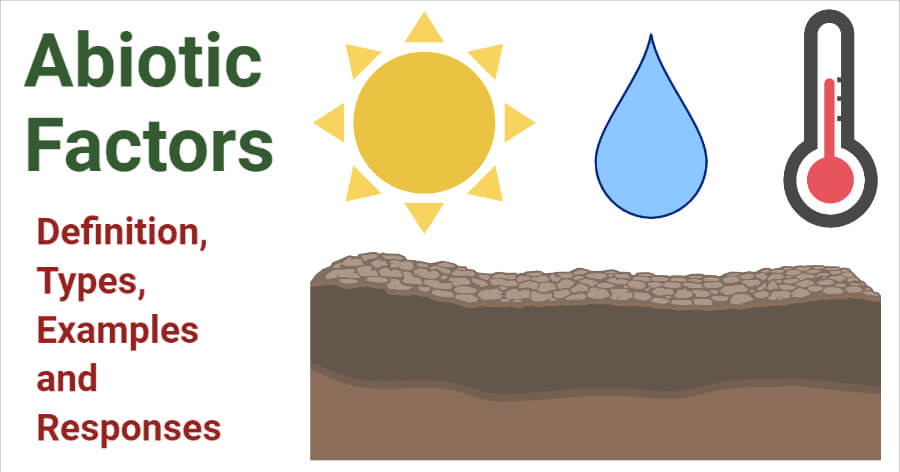
Soil Composition and Structure
Soil composition and structure are vital abiotic factors that influence ecosystem health and productivity. Soil is not just a medium for plant growth; it is a complex, dynamic system that supports a myriad of life forms and biochemical processes. The composition and structure of soil determine its ability to retain water and nutrients, support plant roots, and sustain microbial and animal life. Understanding the components and characteristics of soil is essential for conservation, agriculture, and ecosystem management.
- Physical Composition: Soil consists of mineral particles of varying sizes (sand, silt, and clay), organic matter, air, and water. The relative proportions of these components affect soil texture, which influences water retention, aeration, and nutrient availability.
- Organic Matter: Decomposed plant and animal residues contribute organic matter to the soil, enriching it with nutrients and improving its structure. Organic matter enhances soil fertility, water retention, and microbial activity, which are crucial for nutrient cycling and plant growth.
- Soil Horizons and Profiles: Soil is organized into layers or horizons, each with distinct physical, chemical, and biological characteristics. These horizons form a soil profile that varies depending on factors like climate, vegetation, and time. Soil profiles provide insights into soil formation processes and nutrient availability.
- Water and Air Content: The spaces between soil particles hold water and air, essential for root respiration and microbial activity. Proper balance between soil water and air is critical for healthy plant growth and nutrient uptake.
- pH and Nutrient Availability: Soil pH influences the chemical forms of nutrients, affecting their availability to plants. Different plants require different pH levels for optimal growth, making soil pH a key factor in species distribution and ecosystem diversity.
- Microbial and Faunal Activity: Soil is a habitat for numerous microorganisms and animals, such as bacteria, fungi, earthworms, and insects. These organisms play vital roles in organic matter decomposition, nutrient cycling, and soil structure formation, contributing to ecosystem productivity and resilience.
Soil composition and structure are foundational to terrestrial ecosystems, supporting plant life, influencing water and nutrient cycles, and hosting a vast array of biodiversity. Healthy soils are essential for agriculture, forest health, and combating climate change through carbon sequestration. Efforts to preserve and restore soil health are crucial for sustainable ecosystem management and conservation.
Abiotic Factors in Ecosystems: Water
Dive into the fascinating world of abiotic factors as this video unravels the hidden influences that shape our environment. Explore the incredible impact of temperature, weather patterns, and soil composition on the living organisms and ecosystems that surround us.
GCSE Biology: Biotic and Abiotic Factors #83
Prepare to be amazed by the intricacies of biotic factors in this captivating video. Witness the interconnectedness of all living organisms, from plants and animals to microscopic organisms, and discover how they interact and depend on each other for their survival. Get ready to embark on a truly eye-opening journey into the web of life.
Air and Atmospheric Gases
Air and atmospheric gases constitute essential abiotic factors that significantly influence life on Earth and the functioning of ecosystems. The atmosphere is a complex mixture of gases that envelops the Earth, providing oxygen for respiration, carbon dioxide for photosynthesis, and other gases that play crucial roles in climate regulation and the protection of living organisms. The composition and quality of atmospheric gases directly affect the health of ecosystems, the climate, and the global environment.
- Oxygen (O2): Essential for the respiration of most living organisms, oxygen supports the metabolic processes that release energy from organic compounds. The concentration of oxygen in the atmosphere affects the distribution and diversity of life forms.
- Carbon Dioxide (CO2): A key component of the global carbon cycle, carbon dioxide is used by plants, algae, and some bacteria during photosynthesis to produce energy, releasing oxygen as a byproduct. Changes in CO2 levels can significantly impact climate patterns and ecosystem dynamics.
- Nitrogen (N2): Although inert in its gaseous form, nitrogen is essential for the synthesis of amino acids and nucleic acids. Nitrogen fixation by bacteria and its incorporation into biological processes is a critical step in the nitrogen cycle, affecting ecosystem productivity.
- Water Vapor (H2O): A significant greenhouse gas, water vapor contributes to the regulation of the Earth"s temperature through the greenhouse effect. It is also essential for the hydrological cycle, influencing precipitation and humidity levels.
- Ozone (O3): In the stratosphere, ozone forms a layer that protects living organisms from harmful ultraviolet (UV) radiation. However, near the surface, ozone can be a pollutant that damages plants, animals, and human health.
- Greenhouse Gases: Besides CO2 and H2O, other gases like methane (CH4), nitrous oxide (N2O), and fluorinated gases act as greenhouse gases. They trap heat in the atmosphere, playing a crucial role in regulating Earth"s climate and affecting ecosystem dynamics.
The balance and dynamics of air and atmospheric gases are critical for maintaining life-supporting conditions on Earth. Changes in the composition of atmospheric gases, due to natural processes or human activities, can lead to climate change, affecting ecosystems and biodiversity worldwide. Understanding the roles and impacts of these gases is essential for addressing environmental challenges and promoting sustainable development.

Wind Patterns and Effects
Wind patterns are a significant abiotic factor that influences ecosystems in various ways. Wind is the movement of air across the Earth"s surface, driven by differences in atmospheric pressure that arise from temperature variations. These patterns of air movement have profound effects on weather, climate, and the distribution of many living organisms. The impact of wind extends from pollination and seed dispersal to the shaping of physical landscapes and the regulation of temperature and moisture levels in habitats.
- Pollination and Seed Dispersal: Wind facilitates the pollination of many plant species by carrying pollen from one plant to another. It also aids in the dispersal of seeds, enabling plants to colonize new areas and maintain genetic diversity within populations.
- Temperature and Moisture Regulation: Wind plays a crucial role in regulating temperature and moisture levels in ecosystems. It can cool areas by dispersing heat and bring moisture to dry regions, affecting the types of vegetation and animal life that can thrive in those areas.
- Formation of Physical Landscapes: Wind can shape physical landscapes through the process of erosion and deposition. In deserts, wind-blown sand can create dunes, while in colder regions, wind action can sculpt features in snow and ice.
- Climate Patterns: Large-scale wind patterns, such as trade winds, westerlies, and polar easterlies, play a significant role in determining climate patterns around the world. These winds influence ocean currents, weather systems, and precipitation patterns, impacting ecosystems globally.
- Impact on Marine Ecosystems: Wind influences surface water movement and upwelling in marine ecosystems. This can bring nutrients from the deep ocean to the surface, supporting the growth of phytoplankton and affecting the abundance and distribution of marine life.
- Vegetation and Habitat Structure: In areas exposed to strong winds, vegetation may adapt by growing lower to the ground or developing stronger root systems. Wind can also influence the structure of habitats, affecting the distribution and behavior of animal species.
Understanding the effects of wind patterns on ecosystems is crucial for environmental management and conservation. Wind influences not only the physical environment but also the biological interactions within ecosystems, affecting biodiversity, productivity, and ecosystem health. Recognizing the role of wind can help in predicting ecological changes and in the development of strategies for mitigating the impacts of climate change.
Geographical and Topographical Features
Geographical and topographical features are critical abiotic factors that shape the physical environment of ecosystems. These features include mountains, valleys, rivers, lakes, and plains, each playing a unique role in determining the climate, soil type, water availability, and biodiversity of an area. The complex interplay between geography and topography influences ecosystem processes, species distribution, and the adaptation of organisms to their environments.
- Mountains: Act as barriers to weather patterns, creating rain shadows and affecting local climate conditions. They can also serve as refuges for species during climate changes, offering varied habitats at different altitudes.
- Rivers and Lakes: Provide freshwater habitats essential for the survival of many species. They influence the landscape through erosion and deposition, creating fertile floodplains that support diverse communities of plants and animals.
- Valleys: Often have microclimates that can support unique ecosystems, with milder weather conditions and higher humidity than surrounding areas, promoting diverse flora and fauna.
- Plains: Usually offer extensive areas for agriculture and biodiversity, with soil types and moisture levels that support a wide range of plant and animal life.
- Coastlines: Offer diverse habitats, from sandy beaches to rocky shores and estuaries, each supporting distinct communities of organisms adapted to varying conditions of salinity, wave action, and tides.
- Islands: Can have unique ecosystems with high levels of endemism. Geographic isolation leads to unique evolutionary paths, resulting in a rich diversity of species.
Geographical and topographical features not only influence the physical conditions of an ecosystem but also affect human activities and land use patterns. Understanding the impact of these features is essential for conservation efforts, land management, and the planning of sustainable development. By shaping climate, water flow, and soil formation, these features play a foundational role in the distribution and diversity of life on Earth.
Human-induced Abiotic Changes
Human activities have led to significant abiotic changes in ecosystems, impacting the physical environment and the life it supports. These changes are often rapid and can have far-reaching consequences for biodiversity, climate, and ecosystem services. Understanding human-induced abiotic changes is crucial for mitigating negative impacts and promoting sustainable interactions with the natural world.
- Climate Change: The release of greenhouse gases from burning fossil fuels, deforestation, and industrial processes is causing global temperatures to rise, altering precipitation patterns, and increasing the frequency of extreme weather events.
- Pollution: Air, water, and soil pollution from industrial emissions, agricultural runoff, and waste disposal can alter the chemical composition of ecosystems, affecting the health of plants, animals, and humans.
- Land Use Change: Deforestation, urbanization, and agricultural expansion change the structure and composition of ecosystems, leading to habitat loss, decreased biodiversity, and changes in soil and water quality.
- Water Withdrawal: The extraction of water for agriculture, industry, and domestic use reduces the availability of freshwater for ecosystems, affecting aquatic life and the functioning of wetlands, rivers, and lakes.
- Introduction of Invasive Species: Human activities often lead to the unintentional or intentional introduction of non-native species, which can outcompete native species and alter ecosystem dynamics.
- Alteration of Atmospheric Composition: Besides greenhouse gases, activities such as industrial production and the use of synthetic chemicals can release pollutants that affect air quality and the ozone layer, impacting health and climate.
Human-induced abiotic changes require urgent attention and action to protect natural ecosystems and the services they provide. Through conservation efforts, sustainable practices, and policy measures, it is possible to mitigate some of these impacts and promote a more harmonious relationship between humans and the natural environment.
READ MORE:
Adaptations of Organisms to Abiotic Factors
Organisms have developed a myriad of adaptations to survive and thrive in the face of varying abiotic factors. These adaptations are evolutionary responses that enable species to cope with the physical challenges of their environments. From the extremes of temperature and water availability to the nuances of soil composition and sunlight exposure, life on Earth exhibits remarkable resilience and ingenuity in its adaptations.
- Temperature Adaptations: Organisms in extreme temperatures have evolved insulating features, such as fur and feathers in cold climates, and mechanisms like evaporative cooling in hot environments. Some microbes and plants possess antifreeze proteins to survive freezing temperatures.
- Water Availability Adaptations: Desert plants, such as cacti, store water in their tissues and have reduced leaf surface area to minimize water loss. Animals in arid regions may produce highly concentrated urine to conserve water.
- Light Adaptations: Plants in dense forests have adapted to low light levels by developing larger leaves, while those in bright, sunny environments often have smaller, thicker leaves with reflective surfaces to reduce water loss and prevent damage from intense sunlight.
- Soil Composition Adaptations: Some plants have developed the ability to thrive in poor soils by forming symbiotic relationships with nitrogen-fixing bacteria or mycorrhizal fungi, enhancing nutrient uptake.
- Atmospheric Gases Adaptations: High-altitude animals have adaptations for more efficient oxygen uptake and use, such as increased lung capacity or hemoglobin affinity for oxygen.
- Salinity Adaptations: Organisms in saline environments, such as mangroves and salt marsh plants, can expel excess salt through specialized glands or concentrate salt in leaves that are then shed.
These adaptations are not only testament to the evolutionary creativity of life but also highlight the interconnectedness of biotic and abiotic factors within ecosystems. Understanding these adaptations provides insights into the resilience of ecosystems and the potential impacts of environmental changes on biodiversity.
Discover the pivotal role abiotic factors play in shaping ecosystems, driving biodiversity, and influencing the adaptations of organisms. Unravel the complexities of nature and the interconnectedness of life through the lens of abiotic elements in our ever-changing world.
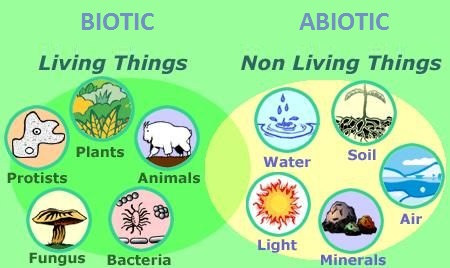
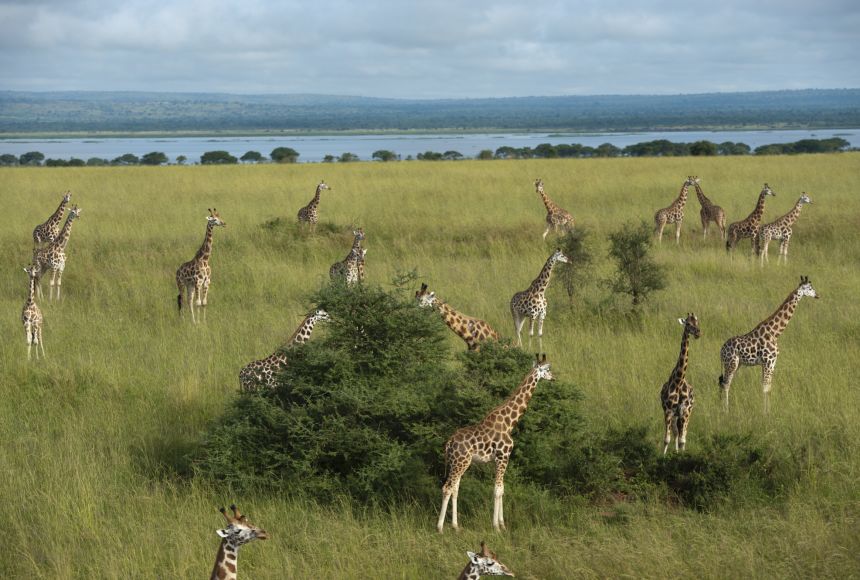
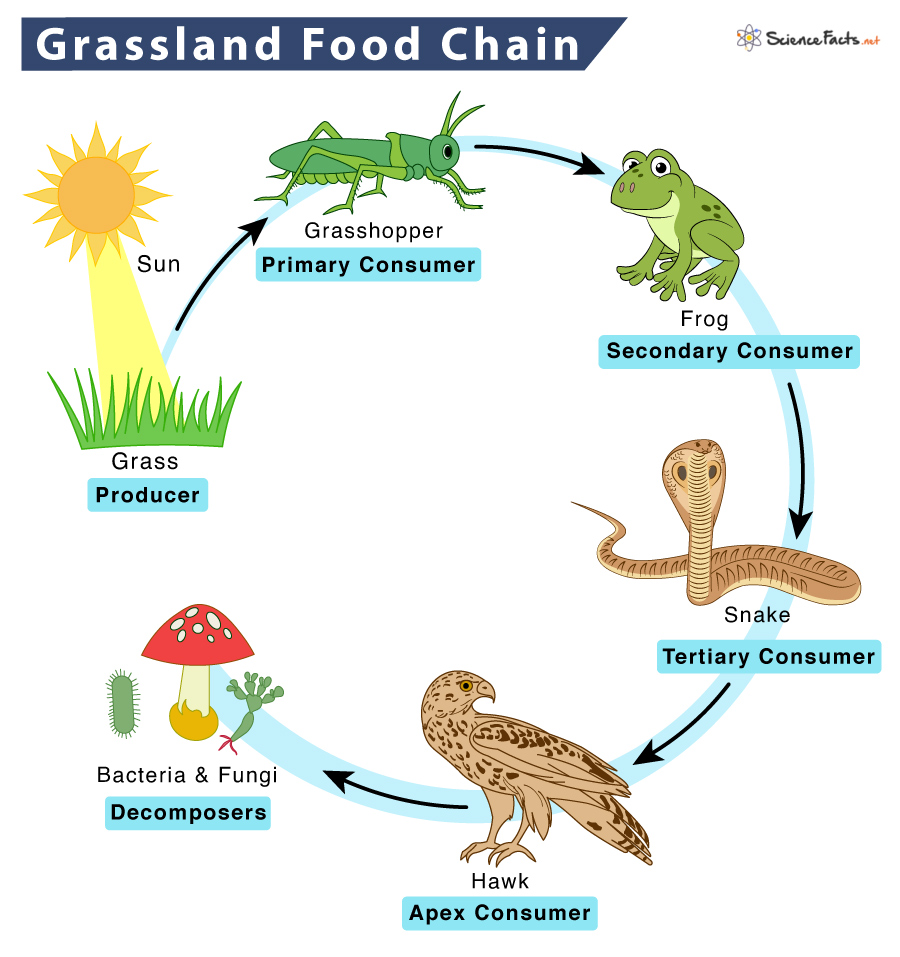
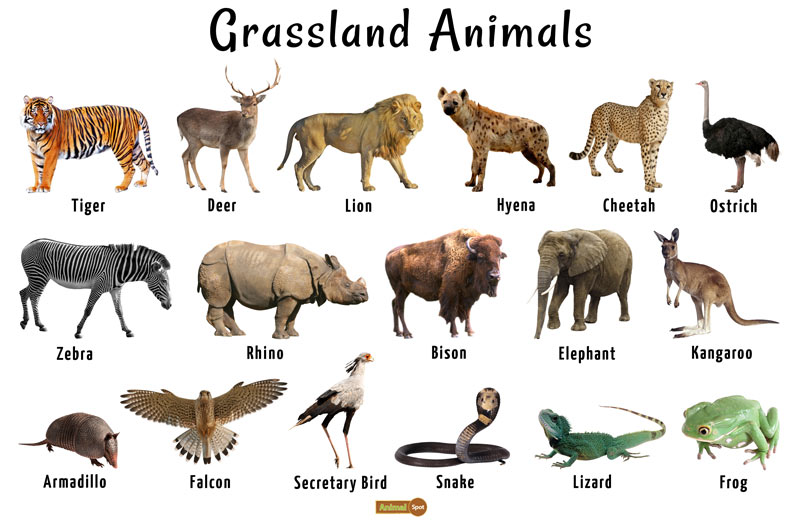




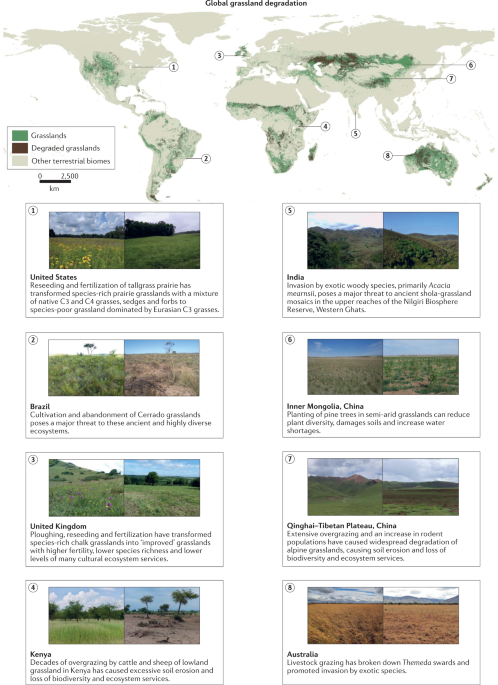




:max_bytes(150000):strip_icc()/164249141-56a006353df78cafda9fb0e5-be1ea8f1f1774e12bde868a948812d8d.jpg)